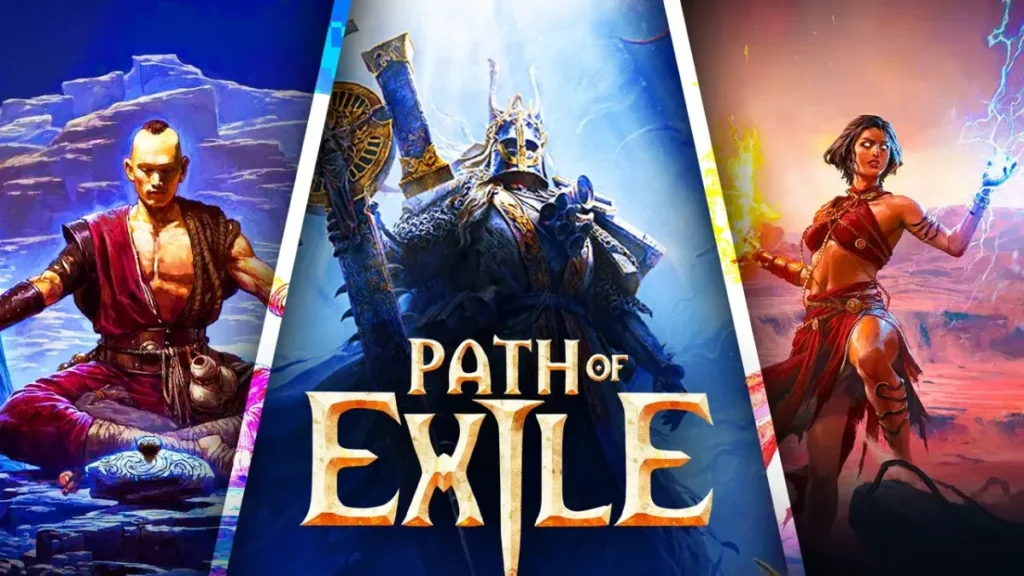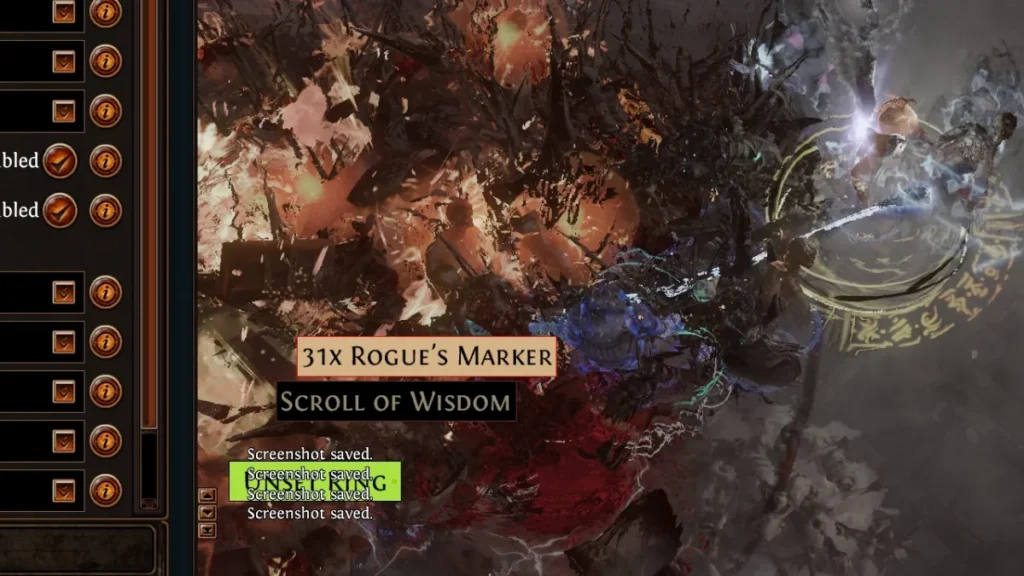Path of Exile 2: One of the most eagerly anticipated ARPGs, it packs into a game an expansive world, deep character customization, and some great combat. It does this during its Early Access phase, where most of the new features the game has in store are experienced by its players through its story and mechanics before the game drops officially with its full release. Whether you are a veteran player of the original Path of Exile, or you have never played in this franchise, this guide will get you going with Path of Exile 2 Early Access.
Table of Contents:
- What is Path of Exile 2?
- System Requirements
- Getting Started with PoE 2: Installation and Setup
- Understanding Gameplay Mechanics
- How to Choose Your First Class
- Create Your First Character
- The Passive Skill Tree
- Combat and Skills System
- Itemization and Loot
- Progression and Leveling
- FAQ’s for New Players
What is Path of Exile 2?

Path of Exile 2 is a direct continuation of the original Path of Exile set 20 years after the events that originally took place in the first game. It includes a new seven-act campaign, some new character classes, and a whole lot of bettering game mechanics.
The game retains that deep customization options which had made the previous game popular but brings updated graphics and loads of new stuff along with quality-of-life features. Early Access players will get to play through the first chapters of the game and new features of gameplay before full launch.
System Requirements For PoE2

You should ensure your system is going to fulfill the minimum and recommended requirements before you start playing Path of Exile 2 so that you would not face any problems running the game.
Minimum System Requirements:
- OS: Windows 7/8/10 (64-bit)
CPU: Intel Core i3 or AMD FX series
RAM: 6 GB
GPU: Nvidia GTX 650Ti / AMD Radeon HD 7850
DirectX: Version 11
Storage: 40 GB available space
Recommended System Requirements:
OS: Windows 10 (64-bit)
CPU: Intel Core i5 or AMD Ryzen 5
Memory: 8 GB
GPU: Nvidia GTX 1060 / AMD RX 580
DirectX: Version 11
Storage: SSD, 40 GB available space
In Addition:
Graphics overhauls of this game and the general load on the system of PoE 2 might force even a more powerful rig than what is listed, as the graphical effects to best and smooth gameplay.
Update all your drivers to get the best performance out
How to Begin with PoE 2: Installation and Setup

Starting with PoE 2 is a breeze. Here’s step-by-step instructions to installing the game and getting it up and running.
- Download the Game Client: Head to the official website of Path of Exile, www.pathofexile.com, and download the PoE 2 client from the link provided there.
- Create a Grinding Gear Games Account:
Step to start, Sign-up online now if not yet, it would still prompt you through the official website, getting an account.
- Install Game
Run after downloading the game installer file. Each on-screen prompts follows by installing and ready. - Run Game
Already Download and Installed the game plus Sign in into your account now.
The games will automatically and update when needed. - Choose Your Region: There is PoE2, distributed across the globe on many servers. Do choose one near your home, though, to avoid all latency issues.
Game Mechanics

Core Essentials Game Loop
Explore and Battle: Explored content activities in a map may include exploring various regions, clearing and questing, killing monster units, and looting – that is, acquiring items.
Character Progression- The character develops with levels so that they can develop their passive skill tree as well as utilize an active skill gem, therefore character development of your build
Loot and Progression- Getting high-end loot then refining it with a crafting system is definitely advancing the game
Controls and UI:
PoE 2 has also implemented a setting to adjust its user interface to suit individual needs. Some major UI features such as the health/mana bars, skill bar, mini-map and inventory all received full implementation for accessible usage during conflicts.
First Character Class

Once you launch PoE 2, you are given a couple of classes. That class is what will determine the way to play, and you’re given particular abilities based on that class. Here are the major classes available in Early Access:
- Marauder (Strength): Very tanky class, a lot of damage, pretty melee-friendly.
- Ranger (Dexterity): Deals ranged attacks, is very mobile.
- Templar Balanced strength/intelligence class, with magic and physical power.
- Duelist Good for hybrids with some strength and dexterity to build versatile characters.
- Scion Balanced class; good for players who like developing complex characters and prefer flexible builds.
Which one to pick?
Marauder is probably one of the classes I would recommend to new players since they are quite simple, solid, and pretty effective in melee combat. Of course, you might also have different preferences towards ranged or magical combat-consider Ranger or Templar then.
Your First Character Build: Character builds are probably the most exciting and subtle part of PoE 2. A new player should look for the easiest and most feasible build that does not drown you in too many variables.
Building a New Character Tips
Focus on survivability: Ensure that the defensive stats, such as life and resistances, are useful at the early game stages. It will make your character tanky and survive when the more aggressive enemies reach at the later stages.
- Basic Skills First: Do not waste time practicing the combination of advanced skills in the early game. Just do a basic attack or elemental skill.
Invest in Passive Skill Tree: Spend those points as you advance on areas in the passive skill tree, according to class and type of build
The Passive Skill Tree
The defining attribute of PoE 2 is its Passive Skill Tree. There, gamers can alter a character’s statistics, skills, and gameplay by choosing nodes on the passive skill tree.
How to Unlock the Passive Skill Tree

To access the Passive Skill Tree, use the key “P” on your keyboard.
- Points Allocation: You receive points every time you level up, to spend on the tree. Be focusing on things that improve your core stats (be it strength, dexterity, or intelligence) and main resistances.
Hybrid Builds: When you feel safe, try hybrid builds playing off a few attributes.
Combat and Skills System
PoE 2 is fight-fast, with tactical movements. Skills for the character are assigned on the hotbar, and timing matters here. The system of Active Skill Gems provides an opportunity to insert skills into the gear and also edit using support gems.
Combat Tips
Use Movement Always: Keep moving; do not stand still so that enemy attacks do not find you easily.
Skill Swapping As your character learns new skills, cycle which one(s) you apply to deal most damage and make the best use of.
Mana Management: Most skills consume mana; keep track of that usage while fighting
Itemization and Loot
Loot is the center of PoE 2—how the items you acquire (or create) shape your character. The game makes use of a currency system for recrafting and upgrading items.
Key Item Types:
- Weapons: Your primary damage dealers, swords, bows, or magic staves.
- Armor: LIFE, Energy Shields, and Resistances-the bare naked defense.
- Jewelry: Rings, Amulets-they are very expensive and just have more bonus on them.
- Currency Items: Orbs, etc. Exchange and craft gear.
Loots Tip:
- Rarity: Keep an eye on the item’s rarity. Rare ones most frequently bring better modifiers.
- Crafting: Make use of the crafting system within the game to upgrade your gear, and consequently your character survival overall.
Progression and Levelling
You will be faced with harder enemies, better loot and skills through the seven acts of PoE 2. To level up fast and effectively:
Complete Main Quests and Side Content: You get experience from quest completion; do not skip side quests for loot drops and more.
-Use Skill Gems: These are the ones which are actually going to take your character out for upgrades. At each act, you’re going to receive more potent gems.
Ascendancy Classes : After Act 10, Ascendancy Classes begin appearing which further break down individuality of your character builds.
11. FAQs – First Time Player Version
Q1: Am I able to play solo in PoE 2?
Of course. PoE 2 can be played single-player, but group play benefits the game a lot, making fights easier, and unlocking more perks.
Q2: How do I earn currency in the game?
Currency is earned when you sell high-value items, complete top-tier content, or when you trade with other players.
Q3: What is the endgame content in PoE 2?
You would get to experience challenging bosses, high-level maps, and Labyrinth endgame content, so that the higher you reach in gaining your experience, the harder the level of difficulty gets rewarded .
Conclusion
Path of Exile 2: This game is outstanding, full of complexity mechanics, and loads of variations with regard to the character. It is hard to dive in from the very start. With this tutorial you will know how to get started playing your game.
Now go in to the content of Early Access and unlock many exciting features in PoE 2. Through experience and experimentation, the systems of the game will be familiar and almost second nature, and not much longer you’ll be deep in the world of the game. Good luck, Exile!
Also Read:-
- Wuchang Fallen Feathers System Requirements: Can Your PC Run It?
- Wuchang Fallen Feathers: The Epic Action RPG
- $1,450 Monthly OAS Benefit for Low-Income Seniors – Eligibility & Payment Dates
- Up to $900 for Singapore’s Seniors in 2025 – Eligibility & Payment Dates
- Is Centrelink Offering a $1500 Payment? Eligibility, Payment Dates

